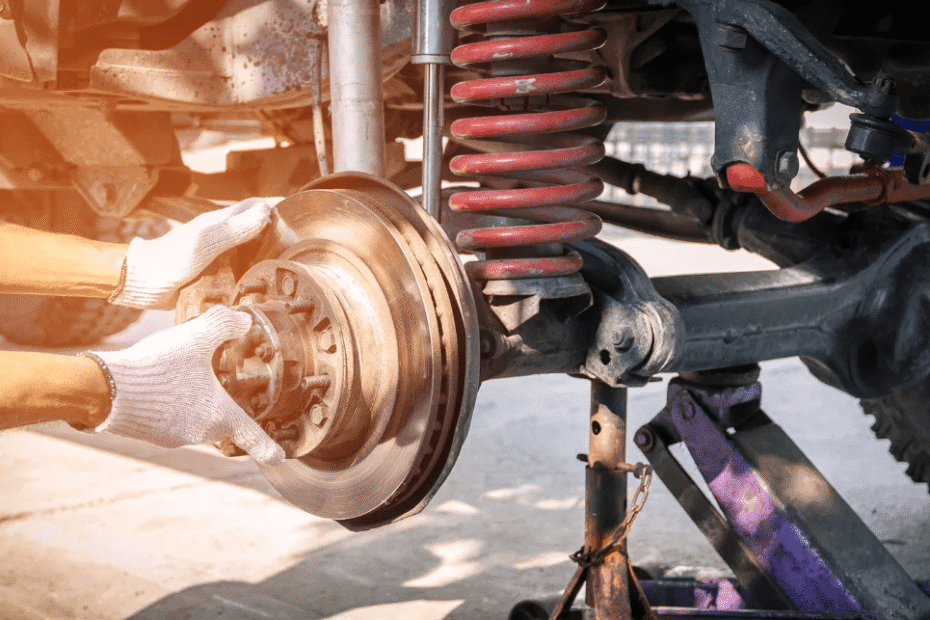I remember the first time I drove a sports car with poor weight balance. It looked sleek and powerful, but every turn felt like a gamble.
The rear end wanted to swing out, and the steering felt heavy. That was when I understood how much weight distribution changes a car’s suspension performance.
Most people think suspension is only about springs and shocks.
But the truth is, where the weight sits in your car—front, rear, or center—decides how well the suspension can do its job.
Today, let’s sit together and explore this topic in simple words, so you’ll understand not only what it means but also how it feels on the road.
Why Weight Distribution Matters
Think of your car like a seesaw. If most of the weight is at the front, the back feels light. If it’s at the rear, the front loses grip.
When the weight is evenly spread, the car feels stable.
Vehicle weight distribution is the key to handling and stability. A car with poor balance might brake poorly, corner awkwardly, or feel bouncy.
On the other hand, a well-balanced car feels predictable and safe.
Front to Rear Weight Balance
The split between the front and rear weight decides how your suspension reacts. Many cars have a front-heavy setup, often around 60/40. That’s because of the heavy engine sitting in the front.
When more weight sits on the front, braking power improves, but it can also lead to understeer—where the car resists turning.
A rear-heavy balance, like in some sports cars, can cause oversteer—where the back slides out in a turn.
Finding the right front to rear weight balance keeps your suspension working evenly, giving you control and comfort.
Center of Gravity in Cars
The center of gravity is like the car’s “balance point.” A lower center of gravity makes the suspension’s job easier. The car leans less in corners, feels planted, and grips better.
I once drove a lifted truck with a high center of gravity. On sharp turns, it felt like tipping over.
Compare that to a sports coupe, which hugs the road like glue. The suspension can only do so much if the center of gravity is off.
Suspension Geometry and Dynamics
Suspension geometry is how all the parts—springs, shocks, control arms—are arranged. When weight isn’t distributed evenly, geometry gets thrown off.
That means the tires may not stay flat on the road during turns, leading to less grip.
Engineers design suspension geometry to match expected suspension load distribution.
If you overload one side, the system can’t perform as designed. That’s why uneven weight distribution causes so many problems.
Lateral Weight Transfer
Ever felt your car lean in a sharp turn? That’s lateral weight transfer. The suspension shifts weight from the inside tires to the outside tires.
Too much transfer makes the car unstable.
A balanced car spreads this transfer smoothly, while a poorly balanced one makes the suspension struggle.
In racing, even small weight changes affect lap times. That’s why suspension tuning for racing focuses so much on weight balance.
Ride Comfort and Suspension Balance
It’s not just about racing. Everyday drivers feel the impact of poor balance too. When weight isn’t spread right, you feel extra bumps.
The suspension works harder on one end, wearing out faster.

I once sat in the back of a minivan loaded with luggage. The rear sagged, the ride was harsh, and every bump felt like hitting a rock.
That’s the effect of weight on suspension in real life.
Weight Distribution and Traction
Traction is your tires’ ability to grip the road. Too much front weight makes the rear lose traction. Too much rear weight makes the front light, reducing steering control.
Sports cars are designed with careful weight balance so that traction stays even.
Trucks, on the other hand, are built with stiff suspension setups for handling loads, so weight distribution changes when carrying cargo.
How Suspension Affects Braking
Weight distribution also changes braking. When you hit the brakes, weight shifts forward. That’s why front brakes are bigger on most cars.
If the suspension isn’t tuned for this shift, stopping distance increases.
A balanced suspension keeps the car flat, preventing the rear wheels from lifting too much.
This is why performance suspension adjustments focus not only on cornering but also on braking stability.
Uneven Weight Distribution Problems
Tires wearing out unevenly
The car pulling to one side
Suspension bottoming out on bumps
Poor fuel efficiency due to extra strain
These problems are often blamed on suspension parts, but the real cause may be uneven weight. Fixing balance often improves everything.
Suspension Tuning and Adjustments
Drivers who race or modify cars often adjust suspension to match weight changes.
Moving the battery, changing ride height, or adjusting spring stiffness can improve balance.
I once helped a friend adjust his track car. By shifting weight slightly and stiffening the rear suspension, the car went from sliding in corners to sticking like glue.
That’s how small adjustments in suspension dynamics can make a big difference.
Weight Balance in Sports Cars
Sports cars are built with near 50/50 balance. This lets the suspension react evenly to both braking and cornering. It’s why they feel so predictable.
In racing, even moving a few pounds can change the car’s character. That’s how sensitive weight balance in sports cars really is.
Impact of Load on Suspension System
Trucks and SUVs often carry extra weight. When loaded, the suspension compresses more, changing how the car handles. That’s why some trucks use helper springs or airbags to manage impact of load on suspension systems.
If you tow or haul often, knowing how weight shifts helps keep the suspension healthy and safe.
To Sum Up
Weight distribution is not just numbers—it’s the invisible hand guiding your suspension. It affects cornering, braking, comfort, and even safety.
A car with balanced weight feels steady, while one without it feels unpredictable.
